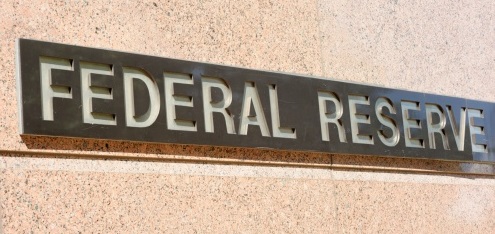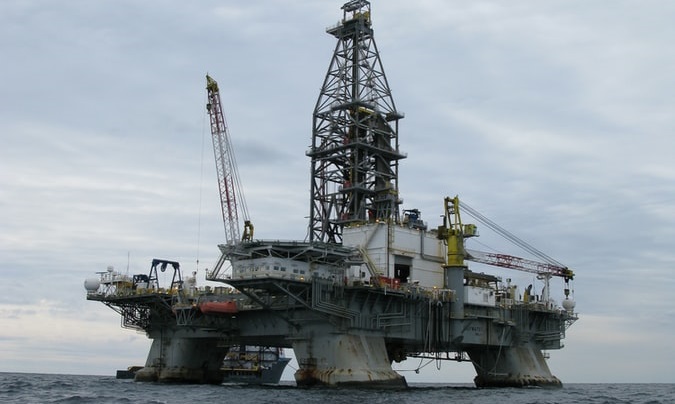Major US equity index futures are flat in pre-market trade, as yesterday’s impressive gains are consolidated. The S&P 500 saw a strong 1.4% gain on the day yesterday, as recently hard-hit sectors (such as those most exposed to the performance of the economy like banks and industrials) recouped a decent portion of the losses incurred amid last week’s hawkish post-FOMC market reaction; the index reclaimed the 4200 level and E-mini S&P 500 futures are this morning consolidating around 4210. The Nasdaq 100 saw less impressive gains yesterday of only about 0.6%, though this is largely because the sell-off last week in the Nasdaq 100 was much less aggressive than in other US indices, tech and growth stocks (with high P/E valuation ratios) have been supported by the recent downturn in global bond yields. On which note, while US bond yields have recovered from recent multi-month lows (the 10-year hit 1.35% earlier in the week), they remain at depressed levels, with the 10-year at 1.47%. 2-year yields remain at about 0.25%, reflecting a strong likelihood that the Federal Funds Target range (currently 0.0-0.25%) will get a 25bps hike at some point within the next two years (i.e. by mid-2023) – remember that this was closer to 0.1% prior to last week’s FOMC meeting and indicates that markets pricing continues to reflect the Fed’s new, more hawkish, policy normalisation timeline. On the topic of the 2-year bond; we have an auction at 1800BST this evening and it will be a good litmus test of investor demand for the bond when the outlook at present looks as though short-end yields will be moving higher in the coming months/years.
In terms of other asset classes, crude oil prices are a touch lower so far on the day, but this is only a minor correction of yesterday’s solid more than 2.0% gains that took both front-month WTI and Brent contracts back to fresh cycle highs, with the former hitting highs at $74.00 and the latter at one point moving above $75.00. In pre-US trading hours, WTI trades in the mid-$72.00s and Brent in the mid-$74.00s. Some have attributed the news that the Russians might be considering a proposal for a faster increase to OPEC+ output at the next meeting (which takes place on the 1st of July). But for now, the crude complex retains underlying support from the themes we have discussed numerous times in recent days; 1) expectations for a continued strong global demand recovery driven by vaccine rollouts, economic reopening and the arrival of the summer driving season in the northern Hemisphere, 2) expectations for a continuation of global under-supply for the rest of the year, despite the potential return of some Iranian supply, which is expected to continue to exert downwards pressure on global oil reserves. Sticking with commodities; spot gold seems to have found a base at $1750 (a decent area of support/resistance in recent months) and has rebounded to the $1780s. Expect gold to continue to trade as an inverse function of USD (or the DXY) moving forward; if the latter’s regains upside momentum, spot gold is likely to break below support in the $1750 area and could be sent back towards the double bottom annual low around $1680 (the next key area of support for the precious metal).
On which note, the US dollar is a little stronger this morning in what appears to be a bit of a correction on yesterday’s weakness, with DXY this morning having moved back to the north of the 92.00 level, an area which is likely to be sticky going forward assuming this week’s Fed speak does not alter recently adjusted FOMC policy expectations too much (more on recent Fed speak below). In terms of other major currencies, GBP is a modest underperformer in the G10 this morning, down about 0.3% on the session versus the US dollar, enough to see GBPUSD drop back under the 1.3900 level. Macro drivers for sterling have been few and far between, with the currency more focused currently on the Fed-dominated macro narrative, though notable recent news includes the UK has formally applied to join the Asia-Pacific free trade pact and that the UK is looking at relaxing travel restrictions on those who have been fully vaccinated. Other G10 currencies are mostly down between 0.1% and 0.2% on the day versus the buck, with EURUSD recently slipping back under 1.1900, USDJPY pushing back towards 110.50, USDCAD rebounding from yesterday’s 1.2350 lows towards 1.2400, AUDUSD sliding back towards 0.7500 from 0.7550 and NZDUSD failing to regain a 0.7000 handle. Domestic macro-drivers for each of these currencies have been few and far between; perhaps the most notable update is an update from ECB sources, which stated that the bank remains some way from agreement on its new inflation strategy, though it is reportedly generally agreed that the ECB could tolerate inflation above 2.0% for a time to make up for the recent decade of mostly below target inflation.
Recent Fed Commentary
The major market focus remains the Fed and thus what Fed policy makers have to say this week. The pre-prepared remarks for Fed Chair Jerome Powell’s testimony before Congress today were released last night and did not provoke much of a market reaction or contain any references to the recently updated dot-plot or hawkish market reaction to last week’s FOMC meeting (as most expected would be the case). His remarks mostly did not allude to policy at all and focused on commentary on the economy, most of which was a reiteration of the remarks he made at the FOMC press conference last week. For reference, in his pre-prepared remarks, Powell notes that the US economy has shown a sustained recovery since last September and real GDP growth is on track for its best in decades in 2020. Moreover, he noted that job gains ought to continue in the months ahead as the vaccine rollout and economic reopening progresses, though downside risks to the economy as a result of the ongoing global pandemic remain. Finally, Powell again noted that inflation had increased “notably” in recent months. Powell will repeat these remarks to Congress this evening before participating in a Q&A, where he may well be pressed by Congressional members on the future path for Fed policy.
Note also that we had commentary from another key Fed member, NY Fed President John Williams yesterday evening. The third most important Fed member (after Chair Powell and Vice Chair Clarida) struck a more reassuring tone yesterday according to some market analysts, emphasising that “conditions have not progressed enough for the FOMC to shift its monetary policy stance” and that “I cannot stress enough that we still have a long way to go to get back to full strength… there are still over seven million fewer jobs today than before the pandemic”. Williams also repeated the narrative that the rise being observed in inflation at the moment is likely to be transitory (dropping from 3% this year back to 2% in 2022 and 2023). All in all, it was net dovish from Williams and MUFG subsequently think he may be one of the dots in the dot plot predicting just one hike in 2023 or no hikes into 2024. The bank thinks that William’s comments “may help to dampen the US dollar’s upward momentum but they are unlikely to be strong enough to reverse the upward trends for US short rates and the US dollar that are now in place”.
The Day Ahead
Central bank speak will be in focus with remarks from ECB Chief Economist Lane due at 1500BST, followed by FOMC member Daly at 1600BST and then ECB’s Schnabel at 1830BST. The main man himself (Fed Chair Jerome Powell) is speaking in Congress from 1900BST. In terms of data, no one will be paying too much attention, but US Existing Home Sales numbers for the month of May are due at 1500BST, as is Eurozone Consumer Confidence data for the month of June. Remember also there is a US 2-year auction at 1800BST.




